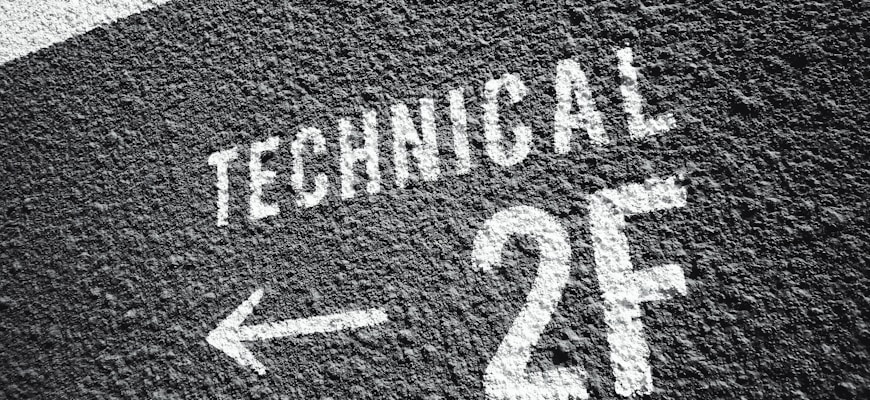How to Read Crypto Charts: Introduction to Technical Analysis

- Understanding the Basics of Crypto Charts
- Introduction to Technical Analysis in Crypto Trading
- Key Components of a Crypto Chart
- Common Chart Patterns in Cryptocurrency
- Using Technical Indicators to Analyze Crypto Charts
- Practical Tips for Reading and Interpreting Crypto Charts
Understanding the Basics of Crypto Charts
Understanding the Basics of Crypto Charts
When it comes to analyzing cryptocurrency markets, understanding how to read crypto charts is essential. These charts provide valuable insights into the price movements of different cryptocurrencies over time. By learning how to interpret these charts, investors can make more informed decisions about when to buy or sell their digital assets.
One of the most common types of crypto charts is the candlestick chart. This type of chart displays the price range of a cryptocurrency over a specific period, typically in 1-day intervals. Each candlestick on the chart represents this price range, with the length of the candlestick indicating the price volatility during that period.
Another important element of a crypto chart is the volume indicator. This indicator shows the total amount of a cryptocurrency that has been traded during a specific period. High volume typically indicates strong market interest, while low volume may suggest a lack of interest or liquidity in the market.
In addition to candlestick charts and volume indicators, crypto charts may also include other technical analysis tools such as moving averages, support and resistance levels, and trend lines. These tools help investors identify patterns and trends in the market, which can be used to predict future price movements.
Overall, understanding how to read crypto charts is crucial for anyone looking to navigate the volatile world of cryptocurrency trading. By familiarizing yourself with the basics of these charts and technical analysis tools, you can gain a better understanding of market trends and make more informed investment decisions.
Introduction to Technical Analysis in Crypto Trading
Technical analysis is a fundamental tool used in the world of cryptocurrency trading. It involves analyzing historical price data to predict future price movements. By studying crypto charts, traders can identify trends, patterns, and potential entry or exit points for their trades.
One of the most commonly used indicators in technical analysis is the moving average. This tool helps traders smooth out price data to identify trends over a specific period. Additionally, support and resistance levels are crucial in determining potential price reversal points.
Understanding technical analysis in crypto trading can provide traders with valuable insights into market behavior. By interpreting charts effectively, traders can make informed decisions and increase their chances of success in the volatile crypto market.
Key Components of a Crypto Chart
When analyzing a crypto chart, there are several key components that you need to be familiar with in order to make informed decisions. These components include price, volume, time frame, and indicators. The price of a cryptocurrency is represented on the chart by candlesticks or lines, showing the movement of the price over a specific period of time. Volume refers to the amount of a particular cryptocurrency that is being traded during a given time frame. Time frame is the duration over which the price and volume data is displayed on the chart, ranging from minutes to months. Indicators are tools that help traders analyze price trends and predict future movements based on historical data. By understanding these key components, you can effectively interpret crypto charts and make more informed trading decisions.
Common Chart Patterns in Cryptocurrency
Understanding common chart patterns in cryptocurrency is crucial for conducting technical analysis effectively. By recognizing these patterns, traders can make informed decisions on when to buy or sell digital assets.
One of the most well-known chart patterns is the head and shoulders pattern. This pattern typically indicates a reversal in the price trend and consists of three peaks – the left shoulder, head, and right shoulder. Traders often see this pattern as a signal to sell.
Another common chart pattern is the double top pattern, which occurs when the price reaches a high point two times before experiencing a downward trend. This pattern is considered bearish and may suggest a good time to sell.
Conversely, the double bottom pattern is a bullish signal that occurs when the price reaches a low point two times before rising. Traders may interpret this pattern as a sign to buy.
The triangle pattern is also widely recognized in cryptocurrency trading. This pattern forms when the price fluctuates between two converging trendlines, indicating a potential breakout in either direction. Traders often wait for confirmation before making a decision.
Lastly, the cup and handle pattern is a bullish continuation pattern that resembles a tea cup with a handle. This pattern suggests a temporary consolidation before the price continues its upward trend. Traders may view this pattern as a signal to buy.
Using Technical Indicators to Analyze Crypto Charts
Technical indicators are essential tools for analyzing crypto charts. These indicators help traders and investors make informed decisions by providing insights into market trends and potential price movements. By understanding how to interpret technical indicators, you can gain a deeper understanding of the market dynamics and improve your overall trading strategy.
There are various technical indicators available, each serving a specific purpose. Some common indicators include moving averages, relative strength index (RSI), and Bollinger Bands. Moving averages help identify trends by smoothing out price data over a specific period. RSI measures the speed and change of price movements, indicating whether a cryptocurrency is overbought or oversold. Bollinger Bands help identify volatility and potential price breakouts.
When analyzing crypto charts using technical indicators, it’s essential to consider multiple indicators to confirm signals. For example, if both the RSI and moving averages suggest a bullish trend, it strengthens the validity of the signal. Additionally, it’s crucial to understand the limitations of each indicator and not rely solely on one for decision-making.
Practical Tips for Reading and Interpreting Crypto Charts
When it comes to reading and interpreting crypto charts, there are several practical tips that can help you make sense of the data presented. By following these guidelines, you can gain a better understanding of the market trends and make more informed decisions when trading cryptocurrencies.
- Start by familiarizing yourself with the different types of charts commonly used in crypto trading, such as line charts, bar charts, and candlestick charts. Each type of chart provides unique insights into price movements and market sentiment.
- Pay attention to key indicators like moving averages, relative strength index (RSI), and volume. These indicators can help you identify potential trends and patterns in the market, allowing you to make more accurate predictions about future price movements.
- Practice drawing trendlines and support/resistance levels on the charts to visualize important price levels and potential breakout points. This can help you determine optimal entry and exit points for your trades.
- Use multiple timeframes to analyze the market from different perspectives. By looking at daily, weekly, and monthly charts, you can get a more comprehensive view of the overall trend and make more informed decisions based on the broader market context.
- Stay updated on news and events that may impact the cryptocurrency market. Major announcements, regulatory developments, and macroeconomic trends can all have a significant influence on prices, so it’s important to stay informed and adjust your trading strategy accordingly.



